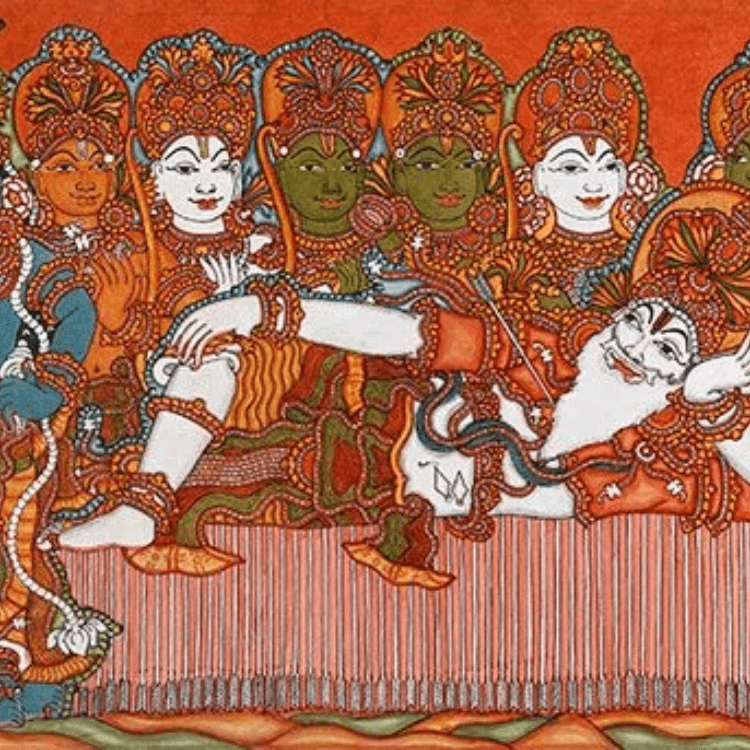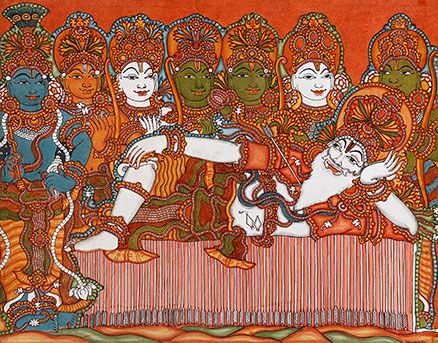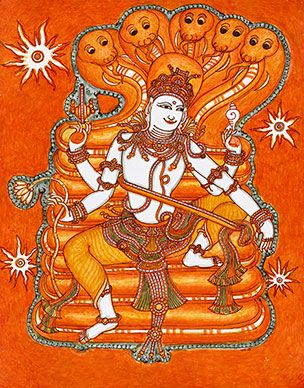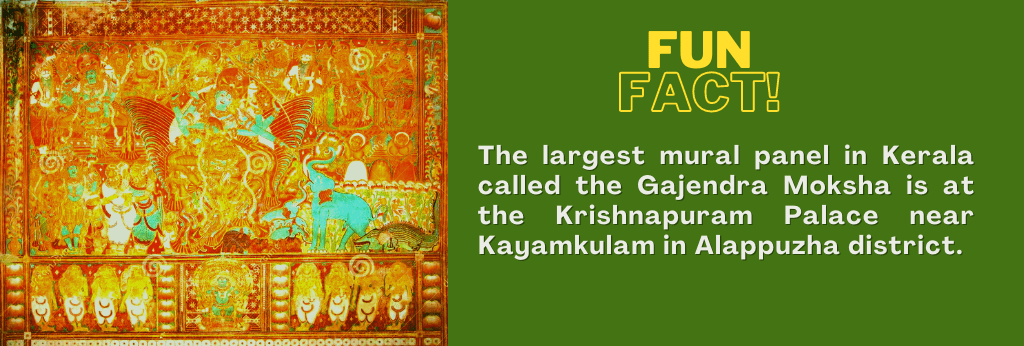
Your Cart
Dive Into The World Of Kerala Murals!

Kerala is known as God's own country; the reason behind this is its natural beauty which is remarkable! But the wonders of Kerala do not end here. Let's find out why it is so fascinating. The ancient frescos of Kerala make it a heritage site, this art form is called Kerala Mural Paintings. These wall paintings serve as an exceptional medium for depicting Hindu mythology. Rooftop is as mystified as you are now and to end the burning curiosity, we dive deeper into the world of Kerala murals to know more about it! So, hop on and join us in our journey to explore more.

### How Old Is Kerala Mural?
Old enough to drop your jaws! Dating between the 9th to 12th centuries CE, these murals are the most iconic symbol of religious and artistic traditions. There are over 150 temples in Kerala consisting of ancient murals. The emergence of murals in Kerala is a transformative art form, it started out as floor painting called ‘Kalamezhuthu’ and then reached its destination as wall paintings or murals.
Earlier, the terrain and its natural surroundings influenced Kerala murals. Later, the buzz of the Bhakti movement and culture intrigued the interest of the painter. These 200-year-old paintings are extraordinary and more elegant than complex. Kerala has the second largest number of mural sites after Rajasthan, in India. This adds to the list of Kerala’s proud Heritage.
### Is There Anything Unique About The Murals?
Of course! These mural paintings are one-of-a-kind and include face and body painting. However, the paintings differ across the region. For instance, in the palace of Mattancherry, women are shown to have round faces and fuller bodies. Whereas the Padmanabhapuram palace in South Travancore depicts women with long faces and well-built bodies.

Another distinctive feature of Murals is the feminine undertone of male gods and the other way around as well. A few figures like Parasuraman, Vettakorumakan saints, and kings had moustaches. The renowned dance and 'mudras' or poses of Kathakali performers are inspired by the mural artists who enacted the poses of the figure in the paintings they would create.
### What Are The Various Styles And Colours?
Kerala murals have a special style in preparation for painting, as the walls of the shrine are first painted with fine calcium carbonate and a little coconut water. This solution is then mixed in the middle on the surface of the wall, and coloured materials are applied with mixing glue to them.

The murals usually encompass five colours including their respective hues and tones. The five colours are yellow, black, white, green, and red. Seldom the semi-precious stone lapis lazuli is used to create the colour blue. The colours are symbolic as they are based on the qualities of Satvikam, Rajasam, and Tamasam. The main colour is Saffron red as it is a complimentary colour for the lush green of Kerala's nature.
### Sites To Visit For Murals
The Tirunandikaara cave temple is said to have the first Mural painting. The earliest mural artwork in Kerala is the wall of the Shiva temple at Ettumanoor. They deliver a peek into Dravidian art and culture. The mural depicts scenes from the Hindu epics of Ramayana and Mahabharata, visualising the deities in their unique style.
The oldest relics of the murals are from the Thirunadhikkara Cave Temple and Tiruvanchikulam.
Temples like Trikodithanam, Vaikom Temple, Pundarikapuram, Udaynapuram, Trikodithanam, Udayanapuram, Triprangode, Guruvayoor, Kumaranalloor, Aymanam, the Vadakkunathan temple in Trichur, the Thodeekkalam temple in Kannur and the Sri Padmanabhaswamy temple at Thiruvananthapuram are other fine mural painting sites.
The world of Kerala murals does not end here as there is more to this magnificent art form. India is a bearer of more such mesmerising art and Rooftop is bridging the gap between these art forms and the world. We conduct virtual workshops across the world, offer maestro courses wherein expert artists help you to understand the art closely, offer art therapy, and much more.

Inquisitive about Indian art? Join us on Instagram @rooftop_app for all the latest updates and download the Rooftop app available for both iOS and Android devices.